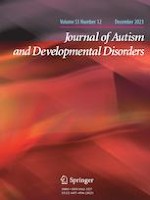29-09-2022 | Original Paper
Investigating the Influence of Autism Spectrum Traits on Face Processing Mechanisms in Developmental Prosopagnosia
Gepubliceerd in: Journal of Autism and Developmental Disorders | Uitgave 12/2023
Log in om toegang te krijgenAbstract
Autism traits are common exclusionary criteria in developmental prosopagnosia (DP) studies. We investigated whether autism traits produce qualitatively different face processing in 43 DPs with high vs. low autism quotient (AQ) scores. Compared to controls (n = 27), face memory and perception were similarly deficient in the high- and low-AQ DPs, with the high-AQ DP group additionally showing deficient face emotion recognition. Task-based fMRI revealed reduced occipito-temporal face selectivity in both groups, with high-AQ DPs additionally demonstrating decreased posterior superior temporal sulcus selectivity. Resting-state fMRI showed similar reduced face-selective network connectivity in both DP groups compared with controls. Together, this demonstrates that high- and low-AQ DP groups have very similar face processing deficits, with additional facial emotion deficits in high-AQ DPs.
